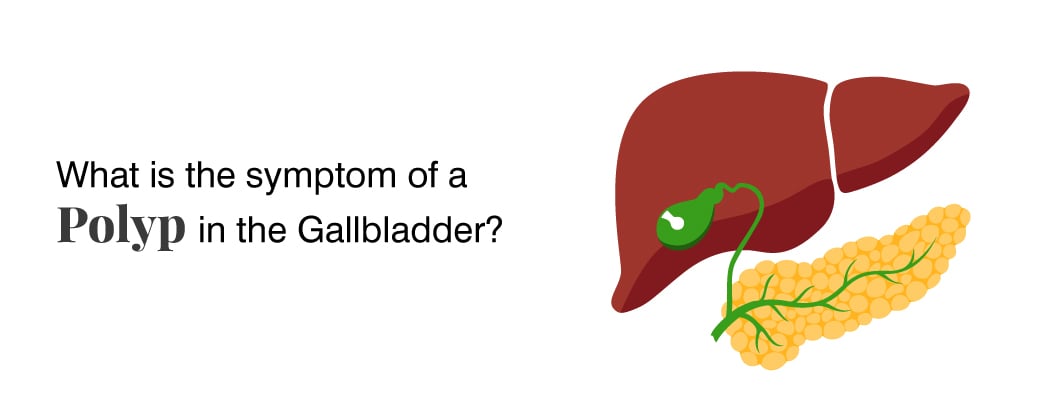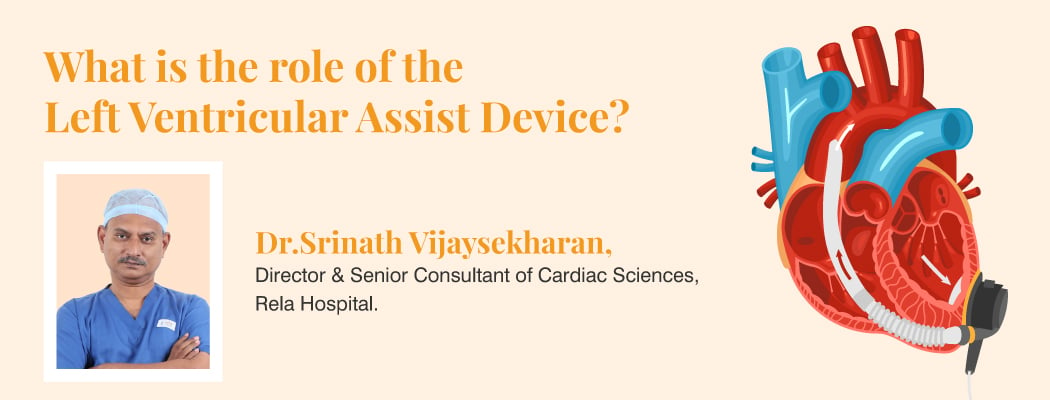Gallbladder Polyps: Symptoms, Causes and Treatments
August 18, 2023

Gallbladder polyps, although seemingly harmless, require attention due to their potential complications. This guide explores their symptoms, causes, and treatments to enhance your understanding. Learning about these growths can help you identify any related issues and protect your digestive health.
Table of Contents
- What is a Gallbladder Polyp?
- Symptoms of Gallbladder Polyps
- Causes of Gallbladder Polyps
- Types of Gallbladder Polyps
- Diagnosis of Gallbladder Polyps
- Treatment of Gallbladder Polyps
- Conclusion
- Frequently Asked Questions
What is a Gallbladder Polyp?
A gallbladder polyp is an unusual growth on the gallbladders inner lining. Typically noncancerous, they vary in size and often show no symptoms. They’re often found incidentally during medical exams. It is important to understand gallbladder polyps and their potential risks, as this knowledge can influence medical decisions and overall gallbladder health.
Symptoms of Gallbladder Polyps
Gallbladder polyps are frequently asymptomatic, causing no obvious symptoms. However, when they do, the symptoms can be vague and include:
- Abdominal pain or discomfort in the upper right side
- Nausea and vomiting
- Indigestion or bloating
- Changes in bowel habits
- Fever or chills (may indicate an infection)
- Jaundice (yellowing of the skin and eyes, rare)
It is important to realise that these symptoms are not limited to gallbladder polyps and can be caused by a variety of different gallbladder and digestive problems. If you are experiencing serious symptoms, see a doctor for an accurate evaluation and diagnosis.
Causes of Gallbladder Polyps
We will explore the various factors that can contribute to the formation of gallbladder polyps.
Age and Gender
Age over 50 is a key factor in gallbladder polyp development. Women have a higher risk, potentially due to hormones.
Cholesterol Deposits
Cholesterol polyps are the most common type, resulting from cholesterol buildup in the gallbladder. Elevated bile cholesterol levels can lead to crystal formation and polyp development.
Inflammation
Chronic cholecystitis, characterized by persistent gallbladder inflammation, can raise the risk of polyp formation. Gallstones or other underlying conditions often trigger this inflammation.
Obesity
Obesity is a risk factor for gallbladder polyps as it can promote cholesterol accumulation in the gallbladder.
Gallstones
Gallstones are hardened deposits that form in the gallbladder. The presence of gallstones can irritate the gallbladder lining and promote the development of polyps.
Porcelain Gallbladder
Porcelain gallbladder is rare and involves calcification of the gallbladder wall, raising the risk of polyps and cancer.
Genetic Factors
Genetics can play a role, with family history potentially increasing the risk of gallbladder polyps.
Other Medical Conditions
Some medical conditions, like primary sclerosing cholangitis, elevate the risk of gallbladder polyps. PSC can impact bile ducts and the gallbladder.
Diet and Lifestyle
Diet and lifestyle choices affect gallbladder polyp development. High saturated fat, low fiber diets, and sedentary lifestyles can increase risk.
Types of Gallbladder Polyps
Understanding gallbladder polyps is crucial for diagnosis and management. Here, we explore their types and characteristics.
- Cholesterol Polyps: These are the most common type, primarily composed of cholesterol deposits.
- Inflammatory Polyps: Result from chronic inflammation in the gallbladder.
- Adenomatous Polyps: More likely to be precancerous and may require removal.
- Pigmented Polyps: Contain excess pigment and can be associated with underlying conditions.
- Fundic Gland Polyps: Typically benign and often found incidentally during medical procedures.
- Mixed Polyps: Contain a combination of different tissue types, making diagnosis and treatment complex.
- Other Rare Types: Extremely uncommon polyp types include papillary, adenomyomatosis, and others.
Identifying the gallbladder polyp type is vital for deciding the right treatment approach. Whether it’s monitoring, medical treatment, or surgery, consulting a healthcare professional is essential for personalised care.
Diagnosis of Gallbladder Polyps
Clinical Evaluation
A clinical evaluation by a healthcare provider is usually the first step in diagnosing gallbladder polyps. During this preliminary evaluation, the following actions are taken:
- Medical History: To gather your information, we will ask you about your medical experiences, including any symptoms you may be experiencing and factors that could increase your chances of having gallbladder polyps, like age, gender and any existing medical conditions.
- Physical Examination: Additionally, a physical examination might be conducted to check for signs of soreness or discomfort. It’s important to note that not all gallbladder polyps result in symptoms.
Imaging Studies
Imaging scans are frequently used after a clinical evaluation to diagnose gallbladder polyps. These non invasive approaches enable doctors to see the gallbladder and diagnose any abnormalities. Common imaging studies include:
- Ultrasound: Ultrasound is commonly employed as an imaging procedure to examine gallbladder polyps. It utilises frequency waves to produce detailed images of the internal structures of the gallbladder. The size, quantity and features of the polyps can be determined using ultrasound.
- CT Scan: In some cases, a computed tomography scan may be recommended. CT scans provide detailed cross sectional images of the gallbladder and surrounding structures, offering additional information about the polyps location and features.
Endoscopic Procedures
If the imaging studies raise concerns about the gallbladder polyps, further evaluation may involve endoscopic procedures. These procedures allow for direct visualisation and sampling of the polyps. Common endoscopic methods include:
- Endoscopic Ultrasound (EUS): EUS combines endoscopy with ultrasound technology. A thin, flexible tube with an ultrasound probe is passed through the mouth into the stomach and duodenum. This provides high resolution images of the gallbladder and allows for fine needle aspiration (FNA) of suspicious polyps for further analysis.
- Endoscopic Retrograde Cholangiopancreatography (ERCP): ERCP involves the insertion of an endoscope through the mouth and into the bile ducts. This procedure is particularly useful for evaluating polyps near the gallbladders neck or within the bile ducts.
Biopsy
In some cases, a biopsy of the gallbladder polyps may be necessary to determine their nature and potential for malignancy. Biopsies can be obtained through endoscopic procedures or, less commonly, during surgery.
Laboratory Tests
Laboratory tests are typically used to assess liver function and evaluate whether gallbladder polyps are causing any disruptions. These tests may include:
- Liver Function Tests: These blood tests measure various liver enzymes and proteins to determine if the polyps are obstructing the flow of bile.
- Tumour Marker Tests: Certain blood tests can check for specific tumour markers associated with gallbladder cancer. While these tests are not definitive for diagnosing gallbladder polyps, they can be part of a comprehensive evaluation.
Treatment of Gallbladder Polyps
Treatment Considerations
The treatment approach for gallbladder polyps hinges on several key factors, including their size, number, appearance and the presence of any suspicious features. Here are the primary considerations in determining the appropriate treatment:
Polyp Size
The size of a gallbladder polyp plays a pivotal role in decision making:
- Small Polyps: Polyps measuring less than 1 centimeter (0.4 inches) are typically considered low risk and may not require immediate treatment. Instead, they are often closely monitored through regular follow-up appointments and imaging studies.
- Large Polyps: Polyps larger than 1 centimeter are deemed high risk due to their increased potential for malignancy. Large gallbladder polyps often warrant more aggressive management, which may involve surgical removal.
Polyp Appearance
The appearance of a polyp on imaging studies can provide important clues:
- Smooth and Regular: Polyps with a smooth and regular appearance are less likely to be malignant. They are often categorized as benign and may be monitored.
- Irregular or Suspicious Features: Polyps that appear irregular, lobulated, or exhibit unusual characteristics may raise concerns. Such polyps require closer evaluation and may necessitate intervention.
Polyp Growth
The rate at which a polyp grows is a significant consideration:
- Stable Size: Polyps that remain stable in size over time are less likely to be malignant. They may be monitored with periodic imaging.
- Rapid Growth: Polyps that exhibit rapid growth, especially in the presence of other concerning features, are more likely to be malignant and may require treatment.
Treatment Options
Managing gallbladder polyps can involve approaches ranging from monitoring to surgical removal. The choice of treatment is. Depends on the circumstances of each case. Here are the main treatment options;
Observation and Monitoring
- Watchful Waiting: In the case of gallbladder polyps it may be recommended to adopt a watchful waiting or active surveillance approach. This involves imaging studies, like ultrasound to monitor the size and characteristics of the polyp over time. If the polyps remain stable without any signs of growth or concerning features treatment may not be necessary.
- Regular Follow up: Even when watchful waiting is advised, its important to maintain follow up appointments, with a healthcare provider. These appointments allow for assessment and timely intervention if any changes occur.
Conclusion
Gallbladder polyps may be silent intruders in the body, often causing no noticeable symptoms. Understanding symptoms, causes, and treatments is crucial. While most are benign, the possibility of malignancy requires medical evaluation and guidance. Regular checkups and consultations empower individuals to make informed healthcare decisions.
Frequently Asked Questions
-
Can Gallbladder Polyps Disappear?
Gallbladder polyps are usually considered permanent and don’t typically vanish on their own. However, in some cases, particularly with smaller cholesterol polyps, they may resolve naturally due to dietary or lifestyle changes. Still, it Is crucial not to rely on spontaneous disappearance, as gallbladder polyps can persist and even become cancerous. Therefore, individuals with suspected gallbladder polyps should consult healthcare professionals for proper evaluation, monitoring and potential treatment if needed.
-
How Fast Do Gallbladder Polyps Grow?
The growth rate of gallbladder polyps varies among individuals. Factors like polyp type, size, and underlying health influence growth speed. Regular medical monitoring through imaging helps assess growth and decide on treatment or management.
-
Are Gallbladder Polyps Cancerous ?
Gallbladder polyps can be cancerous but not always. Monitoring their size and characteristics is crucial. Healthcare professionals assess and recommend necessary measures, including removal if needed, to prevent potential malignancy.







